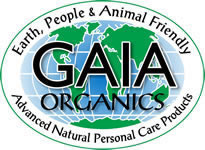|
|
 |
|
 |
|
|
| In my earlier analysis, I exposed the dark side of this ‘mild’ detergent as a significant contact allergen. How much is known about other potential toxicological aspects of this relatively new alternative to SLES? The answer, surprisingly is precious little, so whilst some manufacturers prefer to formulate within the known limits already so well-established for SLES, others put their faith in newer chemicals and take refuge behind the paucity of toxicological data backing these whilst criticizing their more responsible competition by mis-contextualising the abundance of reliable toxicological data available on SLES to enable the safe use of these as was the case already in the mid 80’s (CIR, Cosmetic Ingredient Review Expert Panel, Final report on the safety assessment of sodium laureth sulfate and ammonium laureth sulfate, J Am Coll Toxicol, 2(5), 1983) and which 3 decades later, still has an exceptional safety profile when used within known limitations. The same cannot be said of Cocamidopropyl betaine (CAPB), which more than a decade ago had and still has serious gaps in its toxicological database, including how readily it is absorbed into the body, how easily the body can change it to other substances and whether the body can excrete it or not. Although for humans, the most likely route of exposure is through the skin, no dermal sub-chronic toxicity testing or studies on the absorption, distribution, metabolism and excretion of CAPB are on record. There are no studies of reproductive, or developmental toxicity. There are also no chronic systemic or neurotoxicity studies. In fact, not only have no studies evaluated its acute toxicity in humans by any route of entry, it is also not known at all how long-term (chronic) exposure to CAPB is even likely to affect humans. (CIR, Cosmetic Ingredient Review Expert Panel, Final report on the safety assessment of cocamidopropyl betaine, J Am Coll Toxicol 10(1), 1991); (HSDB, Cocamidopropyl betaine, Hazardous Substance Data Bank, National Library of Medicine, Washington, DC, 1994); (EPA, Health Hazard Summaries, Environmental Protection Agency, 1998) During the only acute oral toxicity study in rats, nasal hemorrhage, diarrhea and wet posterior were the outward signs of toxicity (FND Amides Robust Summaries, Dec 2001), most not an uncommon presentation in infants and toddlers, so only the uncommon later end nasal hemorrhage would signal a poisoning crisis. Other than the allergenic contact dermatitis that was eventually determined epidemiologically (the subject of one of my previous documents) and this only because the relationship was easy to establish, little is known of the topical toxicity of Cocamidopropyl betaine (CAPB), other than that the irritation/sensitization and allergenic responses of humans to dermal exposure are associated with chemical impurities, which can also include toxic nitrosamines, which until these were routinely eliminated from the manufacturing of SLES a decade ago, was the only legitimate criticism of SLES, yet this potential problem with CAPB still remains today. Although CAPB was not carcinogenic in a skin-painting study in mice, that study was not considered thorough enough to be conclusive regarding the cancer-causing potential of CAPB. It has been established that CAPB is potentially irritating to the eye. Laboratory animals exposed to varying concentrations exhibited not only swollen eyelids, but also conjunctival irritation and mild to moderate corneal irritation in un-rinsed eyes. (Cosmetics Ingredient Review Compendium, Cosmetic ingredient safety assessments, Washington DC, 2003) The passage of time has not improved the topical safety profile of Cocamidopropyl betaine, which despite neglect of safety/toxicological data, today looks rather dodgy compared to the trusty old SLS/SLES. From an ecological perspective, Cocamidopropyl betaine also falls short of its false model “organic” claims. CAPB is slightly less toxic to fish and algae than is SLES for chronic toxicity. However, from an acute toxicity perspective, it is four and three times more toxic to fish and algae respectively than is SLES. (EPA, Estimating concern levels for concentrations of chemical substances in the environment, EPA, 1984); (EPA, CAPB Environmental Hazard Summary, Environmental Protection Agency, 744-B-98-001, June 1998) Given this shocking state of affairs over Cocamidopropyl betaine, how do the likes of Trevor Steyn (Esse), Retha Botha (Naturebabes) and Anthea Torr (Enchantrix) in good conscience arrive at claims of safety for their products, let alone have the gall to point fingers at a far safer SLES? Clearly they are both seriously deluded and the fraudulently marketed products originating from this source ought to be viewed with a healthy suspicion, especially when it comes to these being targeted at infants and toddlers with such pretence. |
 |
|
||
| |
||
|
||
| |
||
|
Gaia is copyright © 2006 Gaia all rights
reserved Designed by Webs The Way |
||
|
Page Counter as of January 2008 |
